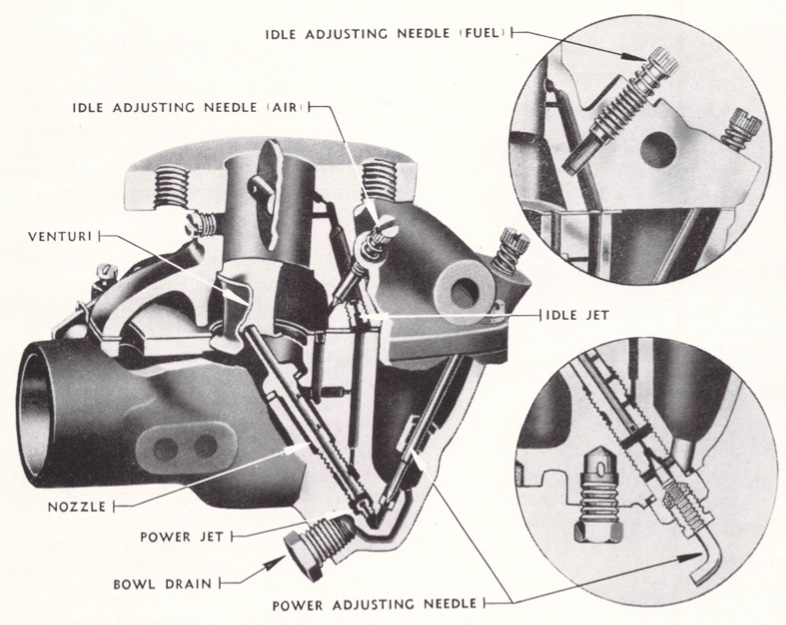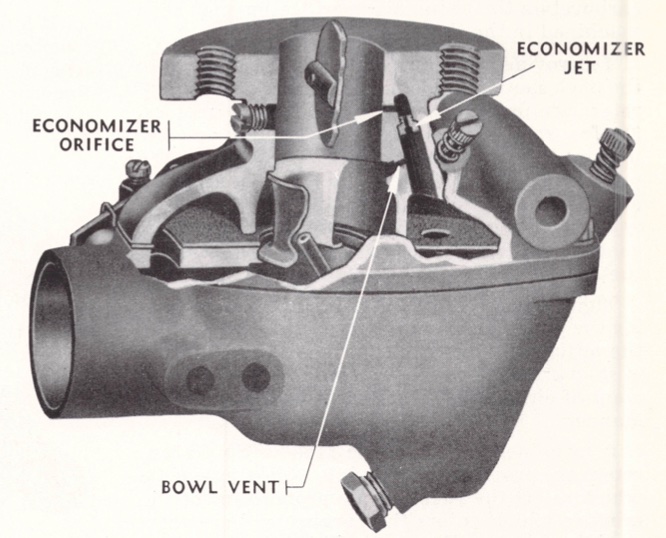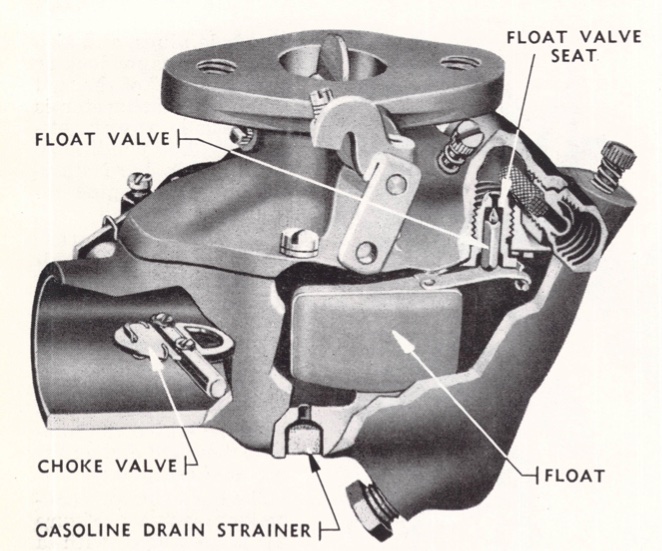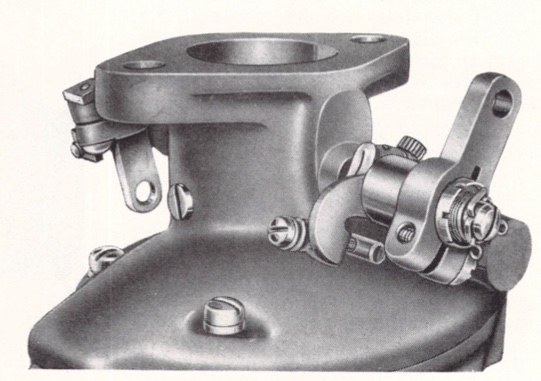There are three types of TSX series carburetors

The Marvel-Schebler Model TSX carburetor is manufactured in three SAE nominal sizes: 7/8″, 1″, 1 1/4″. In addition to these variations in size, there are also variations necessitated by the specific requirements of the engines on which the carbs are used. Many engines, for instance, require special throttle and choke operating levers, and for purposes of calibration, they may have different size jets, nozzles, venturii, etc.
The model TSX carbs use two major castings: the throttle body casting which forms the cover for the fuel bowl, and the fuel bowl casting which contains the air inlet.
Cast iron material is used for ruggedness. It will be noticied that all passages, whenever possible were drilled from the top face of the fuel bowl casting to prevent any fuel leaks to the outside of the carburetor, because of shrunken gaskets or defective hole plugs, and also to prevent vapor lock or percolation of the fuel when the carb was operated under extremely hot conditions, resulting in hard starting or erratic engine operation.
The model TSX carb is completely sealed against dust and dirt. All air entering the fuel bowl of the carburetor must first pass through the air cleaner. The throttle shaft bearings and choke shaft bearings are sealed to eliminate dust and dirt entering at these points.
The back suction economizer is provided with a removable economizer jet. The size of this jet was carefully established by engineering tests to provide the exact fuel requirements for maximum economy at part throttle operation.
On some carb models the proper fuel requirements are established without the use of an economizer jet and the fixed economizer orifice machined in the carburetor throttle body regulates the fuel supplied to the engine. In addition, there are engine and carburetor combinations that do not require the back suction economizer system. In these carburetors the economizer orifice has not been machined in the throttle body casting.
To provide additional economy, in addition to the back suction economizer system, some carburetors are provided with two adjusting needles, the low speed or idle adjusting needle, and the power or load adjusting needle. However, the power adjusting needle is not always required and for applications of this nature the fixed jet type carburetor is used, in which the power jet controls the amount of fuel that is supplied to the engine.
There are two variations in carburetors having the power adjusting needle, commonly called the adjustable jet type carburetor. The adjustment of either type is accomplished in the same manner.
A large percentage of TSX carbs are provided with an idle adjusting needle which alters the fuel and air proportions of the mixture which enters the carburetor bore from the idle passage. This is known as an air adjusting idle needle. It’s important to remember when setting the idle mixture, the air adjusting idle needle must be turned in, or clockwise, to enrich the idle mixture, and the fuel adjusting idle needle must be turned out, or counter-clockwise to enrice the idle mixture.
A dual float mechanism is used in a fuel bowl that almost completely surrounds the nozzle. This design and construction is such that the tractor, or engine, can be operated at any angle up to 45 degrees without seriously affecting the fuel and air ratio and without flooding because the mean level at the nozzle tip is practically constant at any angle of operation.
Some carburetors are equipped with a springloaded governor control lever to permit manual closing of the throttle to an idle position for engines equipped with certain types of governors. An example is shown above.
While there are many variations produced by combining the different types and sizes into a specific application, all TSX carbs incorporate the same engineering principles and are alike from a functional standpoint.




